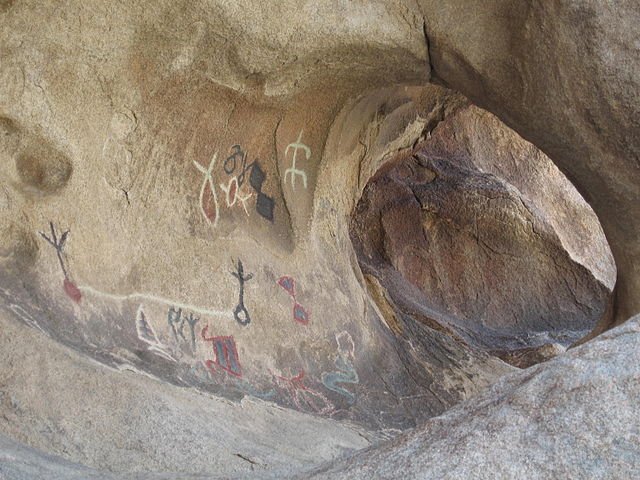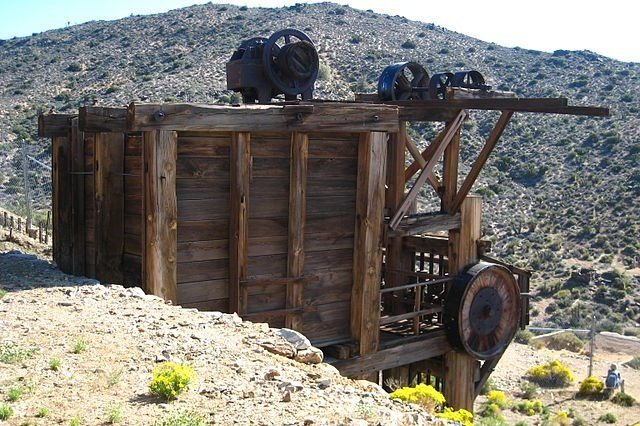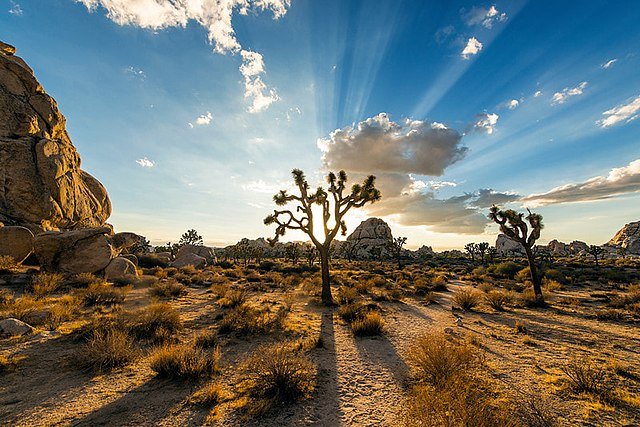A Cultural History of Joshua Tree National Park
Image Credit: unsplash.com/@happy_pixel
Introduction
Joshua Tree National Park is a unique destination located in the high desert of southern California, and its landscape has captivated the imaginations of visitors and inhabitants for centuries. The park is known for its stunning Joshua trees, which are native to the Mojave Desert, as well as its rich and diverse ecosystems, geology, and wildlife. But the history of Joshua Tree is just as fascinating as its present. In fact, the park has been home to a variety of people over the centuries, each leaving their mark on the land in different ways.
Are you visiting Joshua Tree? Check out our Joshua Tree Local’s Guide by downloading our mobile app - available on iPhone and Android.
Native Americans
The land that is now Joshua Tree National Park has been inhabited by native Americans for thousands of years. The park is located within the traditional territories of several indigenous tribes, including the Pinto Culture, the Serrano, Cahuilla, and Chemehuevi.
Image Credit: Creative Commons Public Domain - Robb Hannawacker
The Pinto Culture were the first known inhabitants of Joshua Tree and lived in the area as early as 4000 BCE. They were hunter-gatherers and relied on the park's resources for food, medicine, and other needs. They used the Joshua tree fruit as a food source and used the fibers of the tree to make baskets, sandals and other items.
The Serrano, Cahuilla, and Chemehuevi tribes also made use of the park's resources for food, medicine, and other needs. They gathered the fruit of the Joshua tree, hunted the area's wildlife, and used the plants for medicinal purposes. They also left behind rock art that can still be seen in the park today.
The tribes also had a spiritual connection to the land, and many areas within the park are considered sacred. They had ceremonies, rituals and traditional practices that are still practiced today. Some of these traditional practices include gathering certain plants for medicinal or spiritual purposes, or visiting certain areas for ceremonial or spiritual activities.
The tribes have a long history of resilience and adaptation to the harsh desert environment. They were able to live in harmony with the land and resources, and have passed down their traditional knowledge and practices through generations.
The National Park Service is working with the tribes to preserve the cultural and natural resources within the park, and to ensure that traditional practices and cultural resources are protected for future generations. The park has a cultural resource program that supports the preservation of the park's cultural resources, and works with the tribes to ensure that traditional practices are respected.
Cowboys and Miners
Image Credit: Creative Commons SA-3.0 by Ciar
The arrival of American settlers in the 19th century brought new challenges to the area. Cowboys drove cattle through the park, and miners searched for gold, silver, and copper. Miners played a particularly significant role in the history of Joshua Tree National Park, with the park's unique geology and rich mineral deposits having attracted miners for over a century. The mining boom in the area began in the late 19th century, with miners using a variety of methods to extract the minerals, including panning, placer mining, and hard rock mining.
One of the most well-known mining operations in the park was the Lost Horse Mine, which was active from the 1890s to the 1940s. The mine was known for its high-grade gold and silver ore and was one of the most productive mines in the area. It was operated by a prospector named Johnny Lang, who was able to extract over 10,000 ounces of gold and 16,000 ounces of silver from the mine.
However, the mining boom brought a significant amount of destruction to the environment, with mining operations causing damage to the natural resources. Many of the mines were eventually closed, but the damage had been done, and the land was left scarred. Today, abandoned mines and tailings piles can still be found throughout the park, serving as a reminder of the park's mining history.
Homesteaders
In the early 20th century, homesteaders began to settle in the area, taking advantage of the Homestead Act of 1862, which gave settlers the opportunity to claim land for themselves. The homesteaders were drawn to the area by the promise of free land and the ability to farm in the desert. They built homes, planted crops, and raised animals, but life in the desert was harsh and many homesteaders eventually left.
Image Credit: Creative Commons 3.0 by Christopher Michel
After the homesteaders left, their land was left abandoned and many of the buildings and structures they had built fell into disrepair. Some of the land was eventually taken over by the government and became part of Joshua Tree National Park. However, there are still some inholdings, or privately-owned parcels of land, within the park boundaries that were not absorbed into the park when it was established. These inholdings include old homesteads, mining claims, and other privately-owned lands that are now surrounded by the park.
Some of these inholdings are still being used for grazing, farming, or other activities, and park officials work to balance the preservation of the park's natural resources with the rights of these landowners. Visitors to the park may come across these inholdings, which can be recognized by the presence of fences or other signs of private property.
In recent years, some of the inholdings have been purchased by the National Park Service, with the help of the non-profit organizations and private donations, in order to consolidate the park's land and to protect the natural and cultural resources within the park boundaries. However, some of the inholdings are still privately owned and remain as a reminder of the park's history as a place of human settlement and use.
Rock Climbers
In the 1960s, Joshua Tree began to attract a new kind of visitor: rock climbers. The park's unique rock formations and granite monoliths provided the perfect setting for climbing, and the area quickly became a popular destination for rock climbers from all over the world.
Today, Joshua Tree is considered one of the premier climbing destinations in the United States, with thousands of routes to choose from.
Artists & Musicians
Joshua Tree has also had a significant impact on pop culture. In the 1960s and 1970s, Joshua Tree was associated with the counterculture and the hippie movement, with many musicians, artists, and writers being drawn to the park's unique landscapes and sense of isolation. It became a popular destination for creative inspiration and experimentation.
Image Credit: Creative Commons Public Domain by Hannah Schwalbe
One of the most famous examples of Joshua Tree's association with popular culture is the album cover of U2's "The Joshua Tree." The album, released in 1987, was a commercial and critical success and the band filmed a music video for the single "Where the Streets Have No Name" in the park. The album's title and cover art helped cement Joshua Tree's place in popular culture as a symbol of freedom, individuality, and the American West.
In recent years, Joshua Tree has continued to be a popular destination for photographers, artists, and writers. The park's landscapes have been featured in numerous films, television shows, and music videos, and the park continues to be a popular location for commercial photo shoots and fashion shoots.






